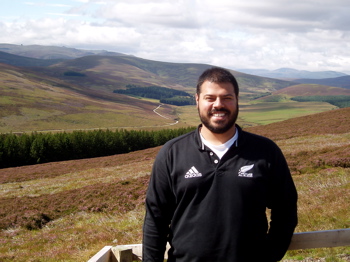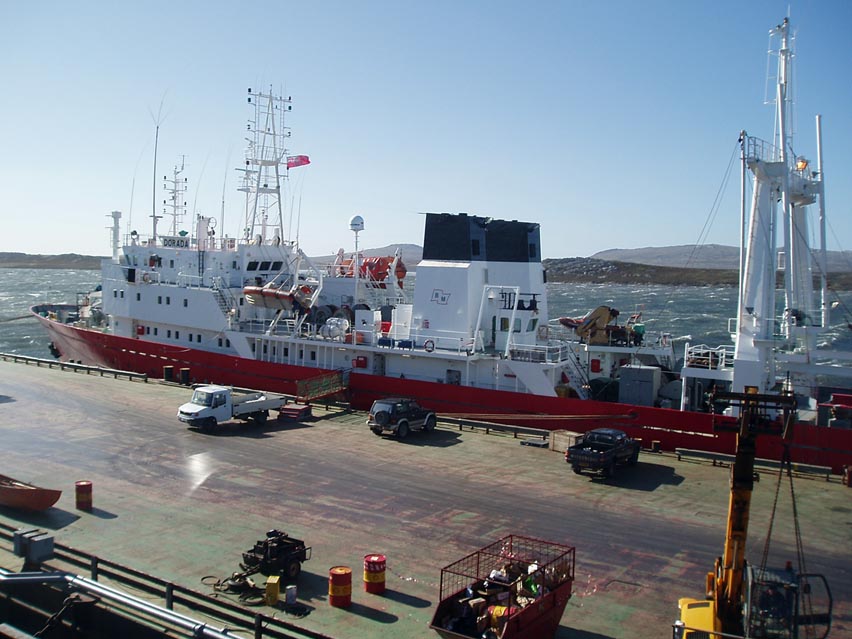Haseeb Randhawa
PhD Student
« Return to Home Page «« Return to Lab Members
 |
Haseeb RandhawaPhD Student Post Doctoral Fellow I was born and raised just outside Montreal in Québec, Canada. My interest in cestodes of elasmobranchs dates back to my days as an undergraduate at Macdonald College of McGill University. I pursued this interest by undertaking an MSc at the Institute of Parasitology working on the biology and taxonomy of helminth parasites of four sympatric skate species from the Bay of Fundy, New Brunswick, Canada. |
| During my MSc studies, I spent much of my time at the Huntsman Marine Science Centre in beautiful St. Andrews, New Brunswick, Canada, and gained a great appreciation for marine biology. Shortly after the completion of my MSc, I began a PhD in the Department of Biology at the University of New Brunswick under the supervision of Drs. Michael D. B. Burt and Gary W. Saunders, assessing host specificity and its determinants in cestodes infecting elasmobranchs from the northwest Atlantic (completed in September 2007). Since September of 2007, I have been based at the University of Otago, where I am working as a postdoctoral fellow in the Parasitology lab under the supervision of Prof. Robert Poulin. I am studying the evolutionary ecology and molecular systematics of cestodes (Tetraphyllidea) infecting elasmobranchs, with emphasis onthose infecting rajid skates. Additionally, I am using molecular tools to determine the ecological roles played by squid, teleosts and marine mammals in the transmission of marine tapeworms. My work is based primarily at the University of Otago in collaboration with the Falkland Islands Fisheries Department. For a more complete description of the projects, please visit our website under the heading “Molecular systematics and coevolution of tetraphyllidean cestodes and rajid skates” or contact me directly. | |
Publications: Randhawa HS (accepted) Insights into the lifecycle of a tapeworm infecting great white sharks using a molecular approach, Journal of Parasitology. Poulin R, Guilhaumon F, Randhawa HS, Luque JL and Mouillot D (accepted). Identifying hotspots of parasite diversity from species-area relationships: host phylogeny versus host ecology, Oikos. Randhawa HS and Poulin R (in press). Determinants of tapeworm species richness in elasmobranch fishes: untangling environmental and phylogenetic influences, Ecography. Randhawa HS and Poulin R (2010). Evolution of interspecific variation in size of attachment structures in the large tapeworm genus Acanthobothrium (Tetraphyllidea: Onchobothriidae), Parasitology, 137: 1707-1720. Randhawa HS and Poulin R (2009). Determinants and consequences of interspecific body size variation in tetraphyllidean tapeworms, Oecologia, 161: 759-769. Randhawa HS and Burt MDB (2008) Determinants of the host specificity and comments on attachment-site specificity of tetraphyllidean cestodes infecting rajid skates from the Northwest Atlantic, Journal of Parasitology, 94: 436-461. Randhawa HS, Saunders GW, Scott ME and Burt MDB
(2008) Redescription of Pseudanthobothrium hanseni Baer, 1956 and
description of P. purtoni n. sp. (Cestoda: Tetraphyllidea) from
different pairs of rajid skates, with comments on the host specificity
of the genus in the northwest Atlantic, Systematic Parasitology,
70: 41-60. |
|
Invited lectures: |
 Scanning electron micrograph of the scolex of Pseudanthobothrium purtoni (Cestoda: Tetraphyllidea: Phyllobothriidae: Echeneibothriinae). |
 Photograph
of a rajid skate. Rajid skates are often infected with echeneibothriine
cestodes. Photograph
of a rajid skate. Rajid skates are often infected with echeneibothriine
cestodes. |
March 2004, “Factors affecting the host specificity of the Tetraphyllidea to their elasmobranch hosts in the waters surrounding the West Isles of the Bay of Fundy.”, Huntsman Marine Science Centre Seminar Series (St. Andrews, NB), invited by Dr. Benjamin Forward. September 2002, “Le poisson d’élevage: Propre à la consommation???”, CÉGEP Régional de Lanaudière (L’Assomption, QC), invited by Mr. Jean-Marie Gagnon of the “Cercle des philosophes naturels”. Conference abstracts (past five years):
|
Randhawa HS* and Brickle P (2010) The role of squid in the transmission of cestodes in the Falkland Islands. XIIth International Congress of Parasitology, Melbourne, Australia (Poster presentation). Brickle P* and Randhawa HS (2010) Insights into the life cycles of tapeworms infecting porbeagle sharks (Lamna nasus) using a molecular approach. XIIth International Congress of Parasitology, Melbourne, Australia (Oral presentation). Randhawa, H.S.*, October 2006, Is there a phylogenetic component to the host specificity of phyllobothriid tapeworms to their rajid skate hosts in the North Atlantic?: Comparing topology- and distance-based approaches, Atlantic Canadian Association of Parasitologists, Pictou, NS (Oral presentation). Randhawa, H.S.*, October 2006, Investigating the timing of host specificity in four species of phyllobothriid tapeworms (Cestoda: Tetraphyllidea), Atlantic Canadian Association of Parasitologists, Pictou, NS (Oral presentation)
|
 Tagging
skates in the southwest Atlantic (From left to right: Katja Janzen,
Ester Sancho, and Haseeb Randhawa). Tagging
skates in the southwest Atlantic (From left to right: Katja Janzen,
Ester Sancho, and Haseeb Randhawa). |
Randhawa, H.S.*, Saunders,
G.W. & Burt, M.D.B., August 2006, Investigating the timing
of host specificity in the genus Pseudanthobothrium Baer, 1956
(Cestoda: Tetraphyllidea) from rajid skates from the Northwestern
Atlantic, Eleventh International Congress of Parasitology, Glasgow,
UK, Poster. Randhawa, H.S.*, Burt, M.D.B. & Saunders, G.W., May 2005, Insights into the life-cycle of Pseudanthobothrium n. sp. (Cestoda: Tetraphyllidea), Canadian Society of Zoologists, Kingston, ON (Oral presentation). |
|
Haseeb holding a skate's spiral valve. The spiral valve is an elasmobranch's intestine and the habitat for tetraphyllidean cestodes. |
 Falkland
Islands research vessel: the Dorado. Falkland
Islands research vessel: the Dorado. |
